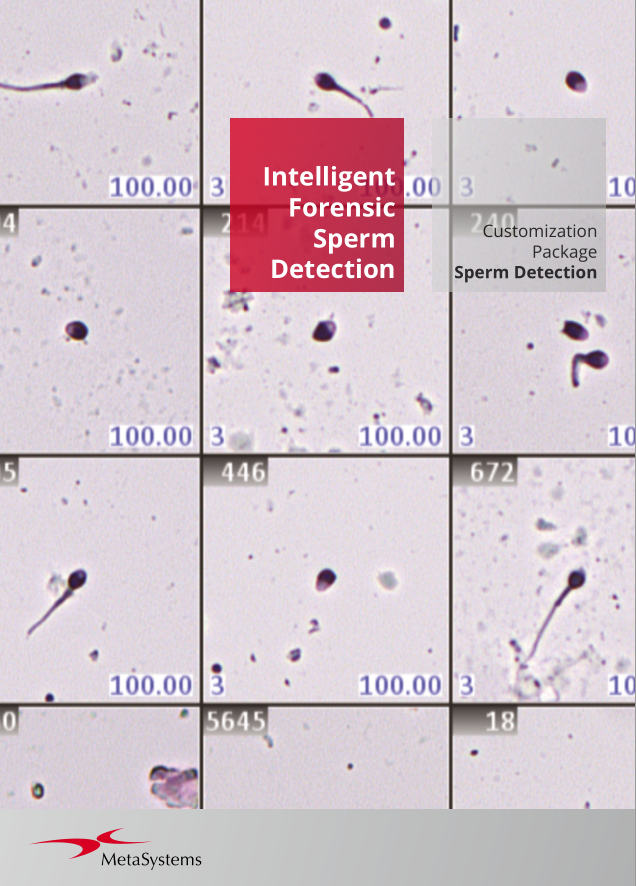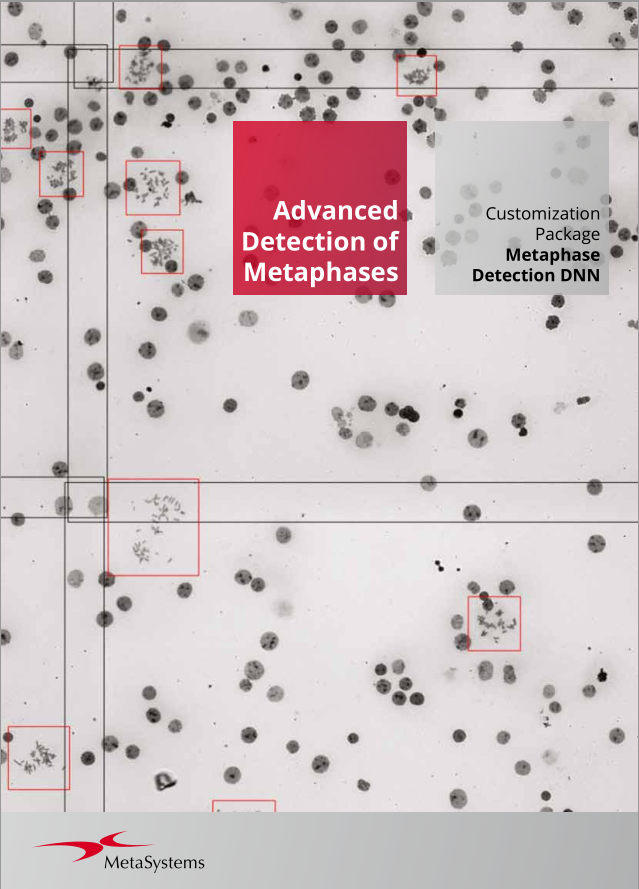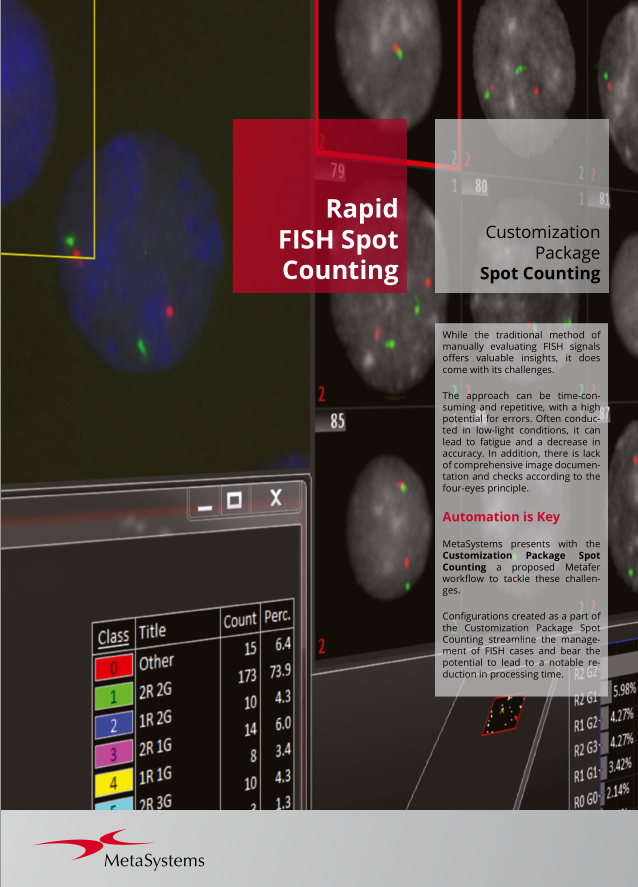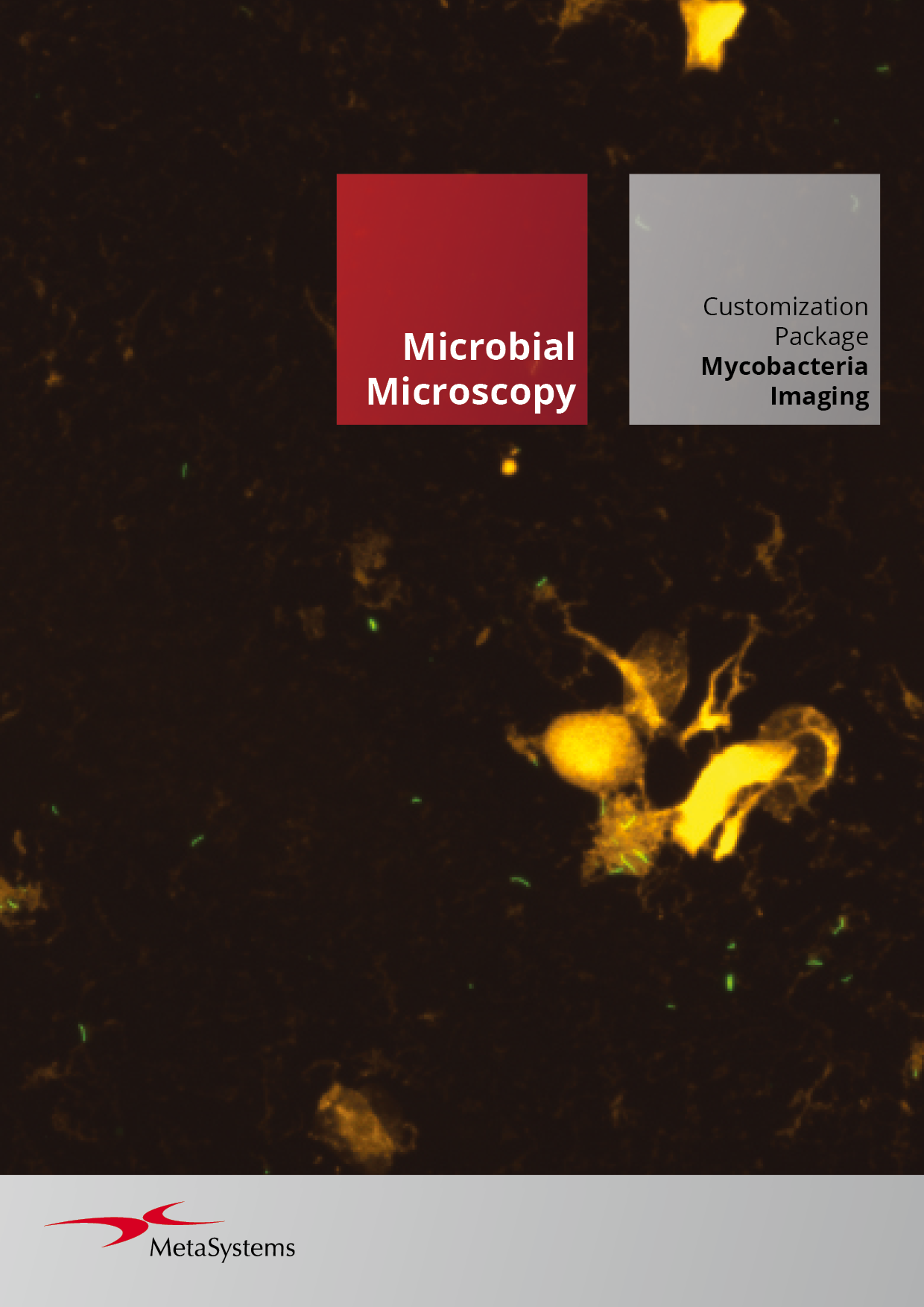- CP Extended Blood Cell Detection (403.8kB)

Whole Blood Cell (WBC) counting determines the relative distribution of leukocyte subtypes and is crucial for diagnosing infections, immune disorders, and hematological diseases. The Customization Package for Extended Blood Cell Detection enables you to use DNN-powered workflows for automated whole blood cell counting with your Metafer installation. The workflows integrate DNNs trained on expert-annotated data and are ready for implementation and validation in your lab.
Also available in: - CP Sperm Detection (551.7kB)

Sperm cell identification serves as a widely utilized forensic analytical technique in the examination of sexual offenses. MetaSystems has put together a workflow incorporating Deep Neural Networks (DNN) technology within the Metafer scanning software. This customization has the potential to speed up and simplify sperm detection in forensic examinations.
- CP Metaphase Detection DNN (358.2kB)

The DNN-based metaphase detection can be added to any Metafer-based metaphase finder as a Customization Package. The approach typically yields metaphases of superior quality compared to those identified by traditional algorithms. The method has the potential to not only boost the overall count of detected metaphases but to also decrease the need for recording metaphases at high resolutions.
- CP Spot Counting (1.2MB)

The Customization Package Spot Counting workflow streamlines the management of FISH cases and bears the potential to lead to a notable reduction in processing time. At the heart of the workflow lies the essential RapidScore review process. This crucial step empowers experts to efficiently evaluate data, focusing precisely on areas of interest while identifying any potential anomalies.
- CP Mycobacteria Detection (291.5kB)

With the support of our application specialists, users can set up a workflow that enables the automated acquisition of Auramine-stained slides. Users can implement a customized Deep Neural Network (DNN) to pre-qualify the found objects. You can also choose to set up a suggested grading of the detected Auramine-stained objects.
Also available in: - CPs for Toxicology (644.5kB)

Many laboratories worldwide benefit from Metafer imaging automation in genetic toxicology. Standardization is key to genetic toxicology testing. The often very subtle effects can only be reliably detected if all aspects of the test, including the scoring, are performed based on standardized parameters.
- CPs for Biodosimetry (1.2MB)

The standardization of microscopy offers significant advantages by fostering uniformity and reliability across diverse research settings. It promotes resource sharing, collaborative research, and the development of universally accepted guidelines and regulations, ultimately advancing the field of radiation safety and public health on a global scale.
Please select your country of residence. Choose International if your country is not listed.
Our internet site may contain information that is not approved in all countries or regions. To ensure accuracy of content, it is required that you select the site which is appropriate for your country of residence.










